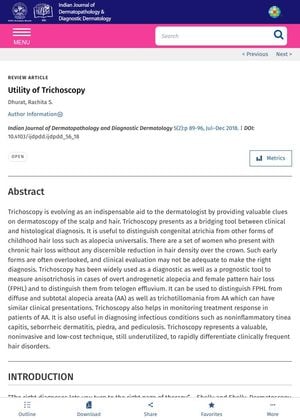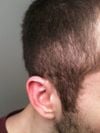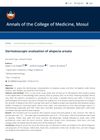Utility of Trichoscopy
January 2018
in “
Indian journal of dermatopathology and diagnostic dermatology
”

TLDR Trichoscopy helps diagnose and monitor hair and scalp problems without needing many biopsies.
The 2017 document discussed the use of trichoscopy, a noninvasive diagnostic technique for examining skin lesions and hair disorders. This tool, using a dermatoscope with nonpolarized and polarized lights, allows for the visualization of deeper skin structures and provides information about the superficial skin. It has been particularly useful in diagnosing and monitoring common hair and scalp disorders, determining disease severity, and tracking treatment response. Trichoscopy can predict disease progression, reduce the need for unnecessary biopsies, and assist in identifying active biopsy sites. It can also be used for quantitative analysis of hair loss diseases. However, its effectiveness can be compromised if the physician misinterprets the structures or if patients are diagnosed using dermoscopy alone, without clinical context.


